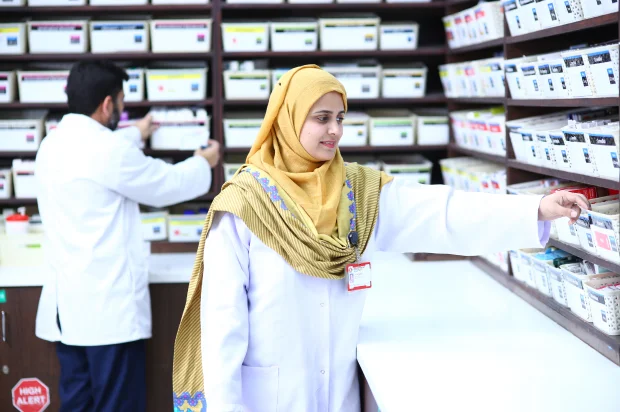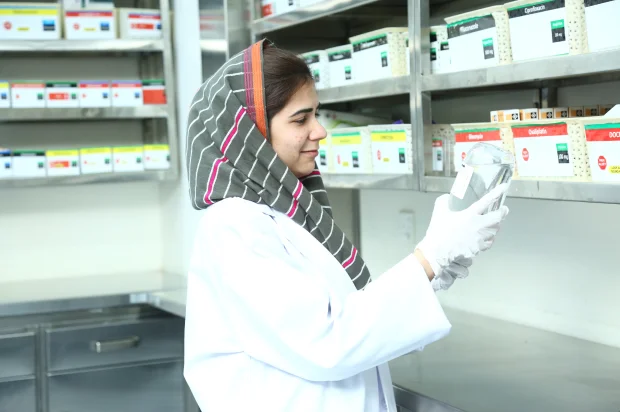Telemedicine involves the use of telecommunication technology to provide clinical services to patients without an in-person visit. It allows health care professionals to assess, diagnose and manage patients at a distance using electronic device and software. It is becoming an increasingly important part of the western world healthcare infrastructure, and over last few years near all leading hospitals in United States, such as Mayo Clinic, Johns Hopkins, Massachusetts General Hospital and Cleveland Clinic, and healthcare networks worldwide, for example National Health Service (UK) and Canada Health are utilizing telecommunication technology for delivering healthcare.
Recently, due to the ongoing COVID – 19 pandemic, many countries and leading healthcare systems all over the world have allowed telemedicine clinics, conducted by video- or voice-call, to temporarily replace face to face consultations. Telemedicine can now be used for new patient consultations as well as for follow-up visits, management of chronic conditions, medication management, specialist consultations and a host of other clinical services remotely via secure video and audio connections.



Payments for the consultations can be made using one of the following options;
Credit or Debit Cards:
You can pay online through your credit or debit cards at www.shaukatkhanum.org.pk/vmc
Online Transfers or Cash Deposits:
You can submit cash or transfer booking fee to any of the following Shaukat Khanum Memorial Trust bank accounts:
Account Title: Shaukat Khanum Memorial Trust
Easypaisa:
You can also send the booking fee through easypaisa mobile account or from any of the 70,000+ easypaisa shops nationwide.
Note: For all online transfers, cash deposits or Easypaisa payments, a copy of the payment deposit slip or transaction ID must be forwarded to the following email address [email protected] or by SMS/WhatsApp to the following number +92 301 1185423, together with your six-digit Hospital Medical Record (MR) number.
You can book a telemedicine consultation appointment by calling the hospital helpline.
Here are some suggestions that may help you prepare for a telemedicine consultation.
Yes, patients can invite loved ones to participate in the telemedicine consultation.
List of services that offer telemedicine consultations are given here.
Patients, who for some reason cannot participate in a video consultation, can utilize the option of audio telemedicine consultation. The health care provider will call you on your landline or cell phone.
Kindly call our helpline to learn about the fee structure: UAN: (042) 111 155 555
The telemedicine program at SKMCH & RC is currently using WhatsApp for video consultations. These video calls are encrypted, which means that only the two devices involved in the conversation can access the shared data.
Your information and safety are carefully protected when you use telemedicine services, just as they would be during an in-person doctor visit. Each transmission is secure and compliant with all traditional privacy regulations.
You may also connect with your provider via telephone.
Appointments in Telemedicine Clinics for follow-up can be obtained at SKMCH&RC, Lahore by calling at +92 42 35905000 Ext. 8888 or emailing at [email protected]. The Shaukat Khanum Telemedicine Clinics at SKMCH&RC, Lahore are functional seven days a week (Monday to Sunday) from 9:00 AM to 8:00 PM.
Appointments in Telemedicine Clinics for follow-up can be obtained at SKMCH&RC, Peshawar by calling at +92 91 5885000 Ext. 5623/3762 or emailing at [email protected]. The Shaukat Khanum Telemedicine Clinics at SKMCH&RC, Peshawar are functional five days a week (Monday to Friday) from 9:00 AM to 5:00 PM.
You will need the following tools for your telemedicine appointment:
Tips for a Successful Telemedicine Consultation
For more tips and frequently asked questions about Telemedicine Clinics, click here.
Shaukat Khanum Memorial Cancer Hospital and Research Centres
We firmly believe that the internet should be available and accessible to anyone, and are committed to providing a website that is accessible to the widest possible audience, regardless of circumstance and ability.
To fulfill this, we aim to adhere as strictly as possible to the World Wide Web Consortium’s (W3C) Web Content Accessibility Guidelines 2.1 (WCAG 2.1) at the AA level. These guidelines explain how to make web content accessible to people with a wide array of disabilities. Complying with those guidelines helps us ensure that the website is accessible to all people: blind people, people with motor impairments, visual impairment, cognitive disabilities, and more.
This website utilizes various technologies that are meant to make it as accessible as possible at all times. We utilize an accessibility interface that allows persons with specific disabilities to adjust the website’s UI (user interface) and design it to their personal needs.
Additionally, the website utilizes an AI-based application that runs in the background and optimizes its accessibility level constantly. This application remediates the website’s HTML, adapts Its functionality and behavior for screen-readers used by the blind users, and for keyboard functions used by individuals with motor impairments.
If you’ve found a malfunction or have ideas for improvement, we’ll be happy to hear from you. You can reach out to the website’s operators by using the following email
Our website implements the ARIA attributes (Accessible Rich Internet Applications) technique, alongside various different behavioral changes, to ensure blind users visiting with screen-readers are able to read, comprehend, and enjoy the website’s functions. As soon as a user with a screen-reader enters your site, they immediately receive a prompt to enter the Screen-Reader Profile so they can browse and operate your site effectively. Here’s how our website covers some of the most important screen-reader requirements, alongside console screenshots of code examples:
Screen-reader optimization: we run a background process that learns the website’s components from top to bottom, to ensure ongoing compliance even when updating the website. In this process, we provide screen-readers with meaningful data using the ARIA set of attributes. For example, we provide accurate form labels; descriptions for actionable icons (social media icons, search icons, cart icons, etc.); validation guidance for form inputs; element roles such as buttons, menus, modal dialogues (popups), and others. Additionally, the background process scans all the website’s images and provides an accurate and meaningful image-object-recognition-based description as an ALT (alternate text) tag for images that are not described. It will also extract texts that are embedded within the image, using an OCR (optical character recognition) technology. To turn on screen-reader adjustments at any time, users need only to press the Alt+1 keyboard combination. Screen-reader users also get automatic announcements to turn the Screen-reader mode on as soon as they enter the website.
These adjustments are compatible with all popular screen readers, including JAWS and NVDA.
Keyboard navigation optimization: The background process also adjusts the website’s HTML, and adds various behaviors using JavaScript code to make the website operable by the keyboard. This includes the ability to navigate the website using the Tab and Shift+Tab keys, operate dropdowns with the arrow keys, close them with Esc, trigger buttons and links using the Enter key, navigate between radio and checkbox elements using the arrow keys, and fill them in with the Spacebar or Enter key.Additionally, keyboard users will find quick-navigation and content-skip menus, available at any time by clicking Alt+1, or as the first elements of the site while navigating with the keyboard. The background process also handles triggered popups by moving the keyboard focus towards them as soon as they appear, and not allow the focus drift outside it.
Users can also use shortcuts such as “M” (menus), “H” (headings), “F” (forms), “B” (buttons), and “G” (graphics) to jump to specific elements.
We aim to support the widest array of browsers and assistive technologies as possible, so our users can choose the best fitting tools for them, with as few limitations as possible. Therefore, we have worked very hard to be able to support all major systems that comprise over 95% of the user market share including Google Chrome, Mozilla Firefox, Apple Safari, Opera and Microsoft Edge, JAWS and NVDA (screen readers).
Despite our very best efforts to allow anybody to adjust the website to their needs. There may still be pages or sections that are not fully accessible, are in the process of becoming accessible, or are lacking an adequate technological solution to make them accessible. Still, we are continually improving our accessibility, adding, updating and improving its options and features, and developing and adopting new technologies. All this is meant to reach the optimal level of accessibility, following technological advancements. For any assistance, please reach out to